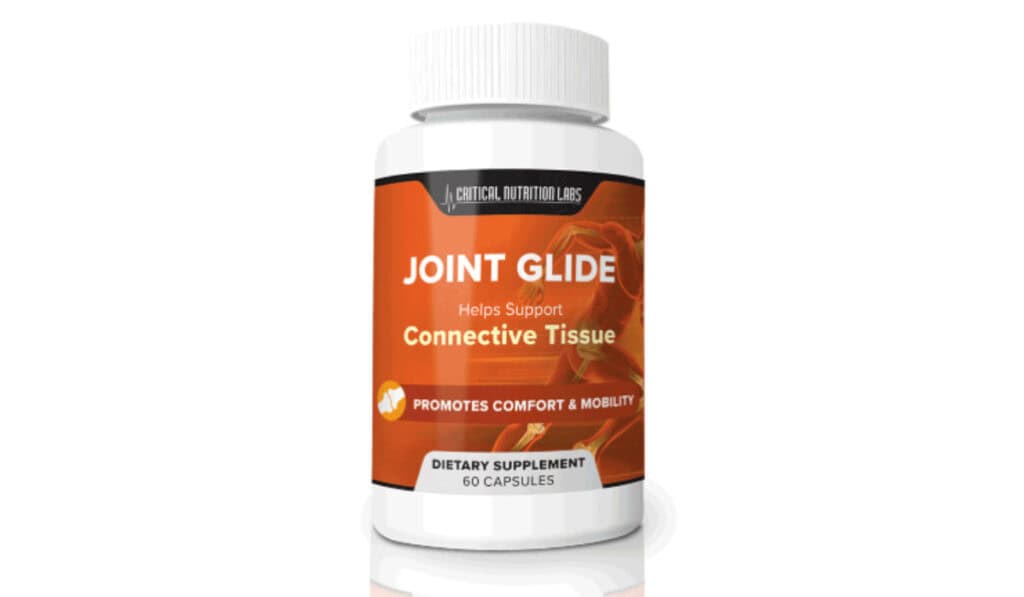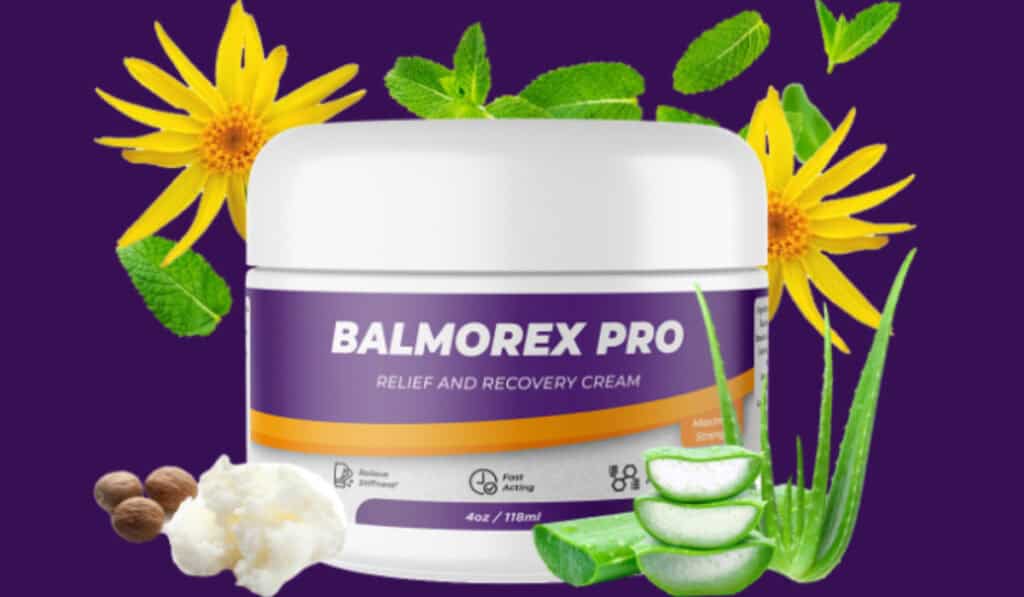A Comprehensive Guide
Joint health is essential for maintaining your quality of life, allowing you to move, bend, and flex with ease. The secret behind this flexibility lies in the harmonious function of cartilage, ligaments, and synovial fluid. These components work together to ensure your joints are protected, stabilized, and lubricated. Without them, every movement would cause friction and wear, leading to joint pain and possibly joint disease.
Cartilage, a rubber-like padding covering the ends of bones in joints, absorbs shock and allows bones to slide over each other smoothly. Ligaments, tough bands of connective tissue, hold bones together and keep the joints stable. Synovial fluid, a thick liquid, lubricates these moving parts, further reducing friction. Together, they play a pivotal role in preventing joint pain and preserving joint health.
Understanding how these components work and how to keep them healthy can help you prevent or manage joint diseases. Consuming foods rich in amino acids can support cartilage repair, while exercises that strengthen the muscles around joints can protect ligaments from injury. Moreover, supplements containing hyaluronic acid can support the synovial fluid in maintaining joint lubrication. By focusing on these aspects, you can take proactive steps toward ensuring lifelong joint health.
Understanding Joint Health
To truly grasp the significance of joint health, consider how joint pain can severely limit your daily activities. Joint health relies on the integrity and functionality of cartilage, ligaments, and synovial fluid. Amino acids play a crucial role in building the proteins that form cartilage and ligaments, while hyaluronic acid in the synovial fluid ensures smooth, pain-free joint movement. Together, these elements prevent the onset of joint diseases by maintaining the balance between wear and tear.
The Importance of Cartilage in Joint Mobility and Protection
Cartilage serves as a protective layer over the ends of bones, ensuring they glide smoothly against each other. One of its key components, hyaluronic acid, helps in absorbing shock and reducing friction during movement. Without healthy cartilage, bones would rub together, leading to pain and limiting mobility—a clear indication of why preserving cartilage health is fundamental for joint function.
Cartilage Types and Their Functions in Joints
In your body, different types of cartilage play unique roles in supporting joint function. The articular cartilage, for instance, covers the surfaces of bones in joints like the knee and the carpometacarpal joint of the thumb, providing a smooth, slippery surface that reduces friction. Another type, found in the intervertebral discs and knee menisci, acts as a shock absorber, distributing loads and reducing the impact on the joint capsule.
However, cartilage lacks blood vessels, relying on the joint fluid for nutrient transport and waste removal. This characteristic makes cartilage healing challenging, especially after an injury. Furthermore, conditions like autoimmune diseases can target joints, leading to inflammation and cartilage degradation. Recognizing these risk factors is crucial for preventing cartilage damage and ensuing joint pain or the need for joint replacement.
How Cartilage Damage Affects Joint Health
When cartilage wears down or gets damaged, the smooth articulating surfaces of bones become rough, leading to increased friction and pain during movement. This damage can contribute to a cycle of joint deterioration, where the compromised cartilage triggers inflammation and further degeneration. Hyaluronic acid, key for cartilage’s shock-absorbing properties, diminishes, exacerbating the problem and accelerating the progression towards joint disease.
This degradation not only increases the risk of osteoarthritis but also impacts overall joint function, making everyday activities challenging. It’s crucial to address cartilage damage early, through interventions like physical therapy or hyaluronic acid supplements, to maintain joint health and mobility. Preventative measures, including regular exercise and a balanced diet, can also help protect cartilage from premature wear and tear.
Ligaments: The Connective Tissue That Stabilizes Joints
Ligaments are the unsung heroes of joint stability, holding bones together and ensuring that your movements are controlled and within a normal range. This connective tissue is crucial for preventing dislocations and providing the structural support needed for everyday activities. Without healthy ligaments, your joints would be unstable, leading to increased risk of injury and joint pain.
Role of Ligaments in Joint Function
Ligaments play a pivotal role in maintaining joint stability and function. By connecting bones and supporting joints, they allow for controlled movements and help prevent excessive motion that could lead to injury. For example, the ligaments in your knee not only stabilize the joint but also protect it from movements that could damage the joint structures.
Despite their strength, ligaments can stretch and tear under excessive force, leading to sprains and other injuries. These injuries can compromise joint stability and function, making rehabilitation and proper care essential for recovery. Strengthening exercises and protective gear can help support ligament health and prevent future injuries, ensuring joints remain stable and functional.
Common Ligament Injuries and Their Impact on Joint Health
Ligament injuries, such as sprains and tears, are common in both athletes and the general population. These injuries can significantly impact joint health, leading to instability, pain, and a reduced range of motion. For instance, an ACL tear in the knee can make it difficult to walk or even stand, highlighting the importance of ligaments in joint function.
Recovery from ligament injuries often requires a combination of rest, physical therapy, and sometimes surgery. During the healing process, maintaining joint mobility and preventing stiffness is crucial. Hyaluronic acid supplements and injections are sometimes used to enhance the healing process, helping to restore joint function and health after ligament injuries.
Synovial Fluid: Nature’s Lubricant for Joints
Synovial fluid plays an important role in joint health, acting as a lubricant that allows for smooth movement between the ends of bones. This thick, viscous fluid helps to reduce friction, preventing the wear and tear that can lead to joint pain. By cushioning the joints and supplying nutrients to the cartilage, synovial fluid ensures your joints move freely and without discomfort.
Composition and Functions of Synovial Fluid
The magic behind synovial fluid’s lubricating properties lies in its composition, rich in hyaluronic acid. This substance gives the fluid its viscous nature, enabling it to act as a powerful lubricant and shock absorber within the joint. Besides lubrication, synovial fluid also plays a crucial role in nourishing the cartilage, delivering nutrients and removing waste through the process of passive diffusion.
Moreover, as an ultrafiltrate of blood plasma, synovial fluid contains proteins and other molecules essential for joint health. These components work together to protect and maintain the joints, ensuring they can withstand the stresses of daily activities. Understanding the functions of synovial fluid can help you appreciate the complexity and importance of maintaining healthy joints.
How Synovial Fluid Maintains Healthy Joint Movement
Hyaluronic acid within synovial fluid is key to ensuring that your joints move smoothly and painlessly. By increasing the fluid’s viscosity, it enhances its lubricating properties, allowing bones to glide over each other with minimal friction. This not only prevents joint pain but also protects the cartilage from wear and tear, crucial for long-term joint health.
Additionally, the synovial fluid’s role in transporting nutrients and removing wastes supports cartilage health, further contributing to healthy joint movement. Regular exercise can help maintain the quality of synovial fluid, ensuring your joints remain lubricated and healthy. Whether you’re an athlete or someone looking to maintain an active lifestyle, appreciating the role of synovial fluid can inspire you to take steps towards protecting your joint health.
Types of Synovial Joints and Their Mechanisms
Synovial joints, the most common and movable type of joints in your body, come in various shapes and sizes to accommodate different movements. These joints are encapsulated by a joint capsule and contain synovial fluid to lubricate the articular surfaces. The design of synovial joints, from hinge joints that allow bending and straightening to ball and socket joints that offer a wider range of movement, showcases the body’s incredible adaptability.
Factors like the shape of the articulating surfaces, the presence of cartilage and ligaments, and the viscosity of the synovial fluid all contribute to the joint’s functionality and health. Conditions such as autoimmune diseases, uric acid buildup, and infection can cause joint inflammation, affecting movement and leading to pain. Understanding these mechanisms helps in identifying risk factors for joint diseases and guides effective prevention and treatment strategies.
Hinge Joint: Movement and Examples
Hinge joints, like those found in your knees and elbows, allow for movement in one direction—bending and straightening. This type of joint resembles the hinge on a door, providing a straightforward, yet essential, range of motion. Thanks to hinge joints, you can perform activities like walking, typing, and grasping objects, showcasing their importance in daily movements.
The structure of hinge joints is designed for durability and strength, ensuring they can withstand the pressures of repetitive movements. Proper care and maintenance, including regular exercise and avoiding excessive strain, can help keep these joints healthy and fully functional. By understanding the role of hinge joints, you can appreciate the complexity of your body’s movement capabilities.
Pivot Joint: Structure and Function
Pivot joints offer a different kind of movement, allowing bones to rotate around a central axis. This unique structure is seen in the neck, where the head rotates on the spine, and in the forearm, enabling the hand to turn palm up or down. The presence of vascular endothelial cells and fibrous tissue in these joints supports a smooth rotation motion while maintaining stability.
The ability to rotate, turn, and twist is crucial for many daily tasks and activities. Maintaining the health of pivot joints through exercises that improve flexibility and strength can prevent injuries and ensure these joints continue to function efficiently. Understanding the structure and function of pivot joints highlights the diversity of joint types in your body and their specific roles in facilitating movement.
Ball-and-Socket Joint: Versatility in Movement
Ball-and-socket joints, found in the shoulders and hips, are celebrated for their greater freedom of movement. These joints allow for rotation, as well as movement in all directions, thanks to the ball-shaped end of one bone fitting into a socket-like end of another. This design supports a wide range of activities, from throwing a ball to running and dancing.
The versatility of ball-and-socket joints is crucial for performing complex movements. However, this increased mobility also comes with a greater risk of dislocation and wear. Protecting these joints through strengthening exercises and maintaining a healthy immune system can help mitigate the impact of autoimmune diseases and ensure these joints continue to provide the wide range of motion necessary for daily life.
Preventing and Managing Joint Health Issues
Maintaining joint health is essential for mobility and quality of life. Through proactive strategies, you can prevent and manage issues that affect your joints, ensuring they remain healthy and functional.
Strategies for Maintaining Healthy Cartilage and Ligaments
Keeping your cartilage and ligaments healthy is key to preventing joint pain and degeneration. Incorporating strength training into your routine can enhance the stability of your joints, while also stimulating the production of synovial fluid, which is vital for lubricating your joints and minimizing friction.
Nutrition and Supplements for Joint Health
Nutrition plays a crucial role in joint health. Eating foods rich in omega-3 fatty acids, vitamins C, D, and K, and minerals like calcium and magnesium can help maintain strong bones and healthy cartilage. Adding supplements such as glucosamine and chondroitin may also provide additional support for cartilage health.
Hydration is also essential, as water helps to keep the synovial fluid that lubricates your joints at an optimal level. Ensuring you drink enough water throughout the day can significantly benefit your joints.
Exercise and Physical Therapy for Stronger Joints
Regular exercise is fundamental for joint health. Low-impact activities like swimming, cycling, and walking can strengthen the muscles around your joints without putting too much strain on them. Strength training, specifically, is beneficial as it helps build muscle mass that supports and protects the joints.
Physical therapy can also be a valuable tool for maintaining and improving joint function. A physical therapist can design a personalized exercise program that targets your specific needs, helping to improve mobility, decrease pain, and prevent future joint issues.
Advances in Treatment for Joint Degeneration
Recent advancements in the treatment of joint degeneration offer new hope for those suffering from chronic joint issues. These include both non-surgical and surgical options tailored to individual needs and conditions.
Non-Surgical Interventions
Non-surgical treatments for joint degeneration have evolved significantly. These can include physical therapy to improve joint function and strength, as well as injections of corticosteroids or hyaluronic acid to reduce inflammation and improve joint movement. Platelet-rich plasma (PRP) injections are another innovative treatment that uses the body’s own healing mechanisms to repair damaged joints.
Lifestyle modifications, such as weight management and the use of supportive devices like braces or orthotics, can also play a crucial role in managing symptoms and improving quality of life without the need for surgery.
Surgical Options for Severe Cases
For severe cases of joint degeneration where non-surgical treatments have been ineffective, surgical options such as joint replacement or arthroscopy can be considered. These procedures can significantly relieve pain and improve joint function, allowing for a better quality of life.
Minimally invasive surgical techniques have made recovery faster and less painful, with many patients experiencing substantial improvements in mobility and pain levels post-surgery.
Real-Life Applications and Case Studies
Exploring real-life applications and case studies demonstrates the effectiveness of various strategies in managing joint health. From athletes overcoming injuries to elderly individuals mitigating wear and tear, these stories provide valuable insights into maintaining joint health in different scenarios.
Case studies often highlight the importance of early intervention, personalized treatment plans, and the role of lifestyle changes in preventing and managing joint issues. These real-world examples serve as a testament to the resilience of the human body and the advancements in joint health care.
Athletes and Joint Health: Prevention and Recovery Strategies
Athletes are particularly susceptible to joint issues due to the intense physical demands of their sports. Preventative strategies, including strength training and proper nutrition, are crucial for maintaining healthy joints. Additionally, incorporating rest periods and using correct techniques can minimize the risk of injury.
In the event of an injury, recovery strategies such as physical therapy, specialized exercises, and sometimes surgical intervention are employed to ensure athletes can return to their sport. The focus is on restoring full function and preventing future injuries through a tailored rehabilitation program.
Aging and Joint Health: Mitigating the Effects of Wear and Tear
As we age, our joints naturally experience wear and tear, but this doesn’t mean joint issues are inevitable. Engaging in regular strength training can help maintain muscle mass and joint stability, reducing the risk of degeneration. Moreover, staying active and keeping a healthy weight can alleviate pressure on the joints, slowing down the aging process on them.
Additionally, older adults should focus on getting sufficient nutrients to support joint health, including calcium for bone strength and omega-3 fatty acids for reducing inflammation. These strategies can significantly contribute to maintaining mobility and quality of life well into older age.
Navigating the Future of Joint Health
The future of joint health looks promising with continuous research and technological advancements. Emerging treatments and preventive measures are being developed to address the root causes of joint degeneration, offering hope for more effective solutions.
Technology also plays a crucial role in diagnosing and treating joint issues more accurately and less invasively, improving patient outcomes and recovery times. Together, these advancements are paving the way toward a future where joint health issues can be managed more effectively, ensuring individuals can maintain their mobility and quality of life.
Emerging Research in Cartilage and Ligament Regeneration
Emerging research focuses on the regeneration of cartilage and ligaments, offering new possibilities for treating joint issues. Innovations in tissue engineering and stem cell therapy show potential in repairing damaged cartilage and ligaments, restoring joint function without the need for replacement surgery. These advancements could revolutionize the treatment of joint degeneration, making it possible for the body to heal itself more effectively.
Furthermore, understanding the blood supply and the specific needs of connective tissues like the ligaments of the hip joint is crucial for developing targeted treatments. Efforts to enhance the body’s natural healing processes, including increasing blood supply and improving the ability of tissues to absorb shock, are central to these research endeavors.
The Role of Technology in Diagnosing and Treating Joint Issues
Technology is transforming the way joint issues are diagnosed and treated. Advanced imaging techniques provide clearer, more detailed views of joint damage, allowing for more accurate diagnoses and tailored treatment plans. Additionally, the development of new materials for joint replacement, such as calcium phosphate, offers improved outcomes for patients undergoing surgery.
Innovative treatments, including gene therapy and the use of biologics, are being explored to address conditions like reactive arthritis, offering more personalized and effective solutions. As technology continues to evolve, it promises to enhance the diagnosis, treatment, and prevention of joint health issues, leading to better care and quality of life for individuals affected by these conditions.
Towards a Pain-Free Future: Final Thoughts on Joint Health
Understanding the intricate dance of cartilage, ligaments, and synovial fluid in maintaining joint health is crucial for moving towards a future where joint pain is a rarity rather than a common complaint. The synovial membrane produces synovial fluid, which is filled with components crucial for nourishing the cartilage and providing a slippery surface that minimizes friction as the joint moves. This delicate balance ensures that normal joints can function under the stress of weight bearing and movement without succumbing to damage or disease. By keeping the protein concentration in synovial fluid balanced and ensuring a thin layer of hyaline cartilage covers the surface of the joint cavity, our bodies work tirelessly to keep us moving smoothly and pain-free.
However, when this balance is disturbed, conditions such as septic arthritis or osteoarthritis can emerge, highlighting the importance of joint physiology knowledge in both prevention and management strategies. Patients with osteoarthritis, for example, might experience a breakdown in the extracellular matrix molecules, leading to a thicker layer of synovial fluid that is less effective at lubricating the joint. Advances in understanding how the synovial lining cells, B synoviocytes, and the fibrous capsule contribute to joint health are paving the way for innovative treatments. Whether through improved surgical techniques that respect the joint’s natural anatomy or through non-surgical interventions that aim to restore the normal function of synovial fluid components and extracellular matrix molecules, the future of joint health looks promising. By embracing a holistic approach that includes nutrition, exercise, and cutting-edge medical treatments, you can take proactive steps towards maintaining healthy joints and enjoying a pain-free future.







